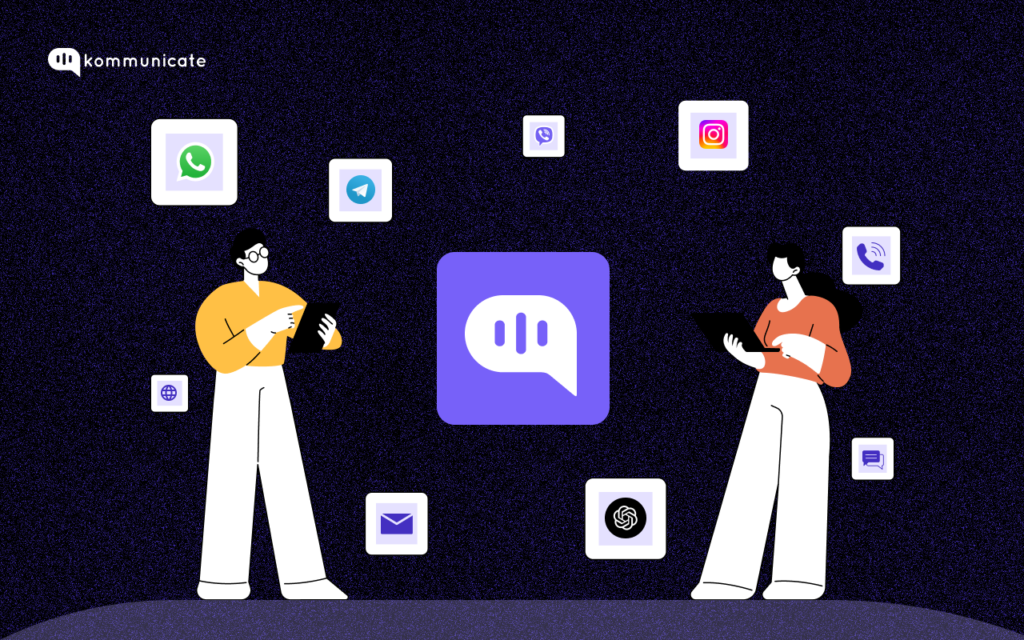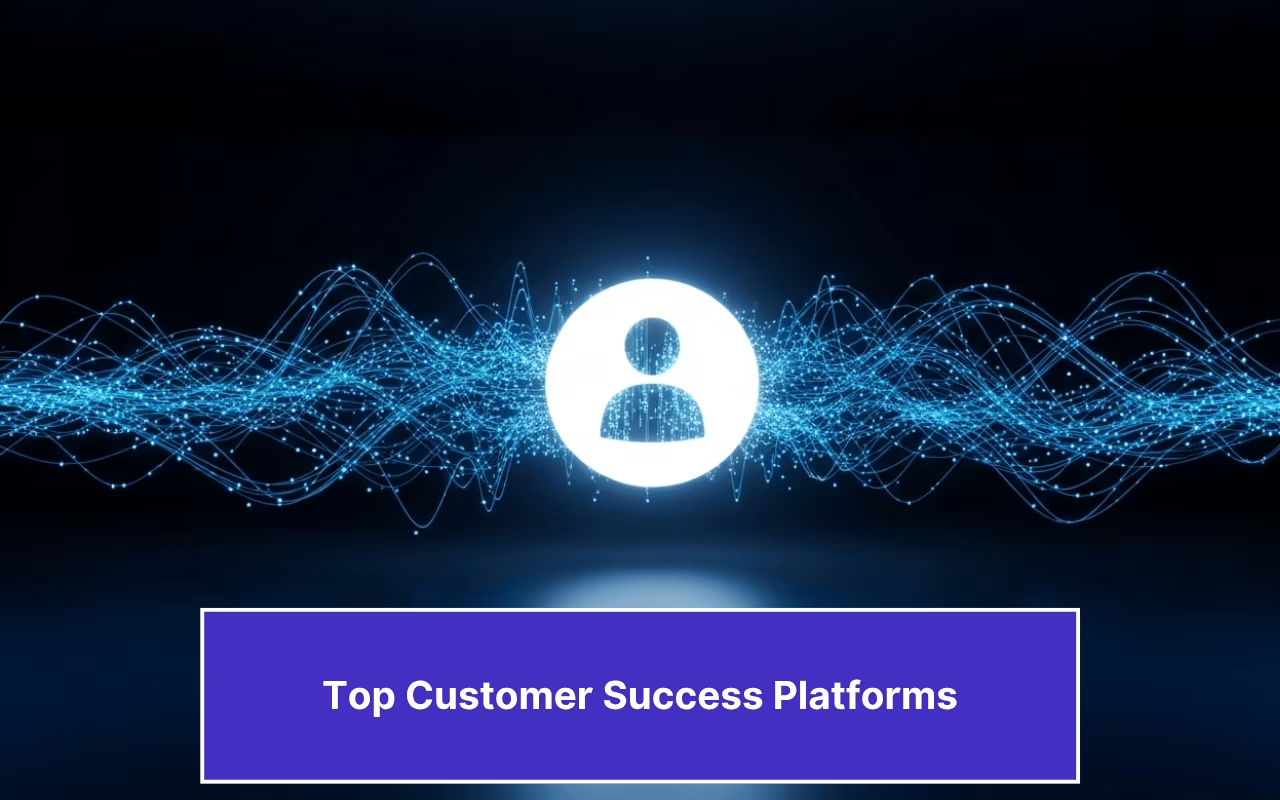Updated on February 13, 2025

As an enterprise, we live in unprecedented times. It has never been easier to stay in touch with a customer, thanks to the plethora of technologies available. At the same time, it has also never been more difficult to keep up with the rising customer demands. To be truly competitive, businesses have to realize that the modern customer experience requires an omnichannel approach. An approach where all the touch points in a customer journey are not viewed in isolation, but as a single entity.
A big part of providing excellent customer experience today is to be available to the customer on a platform they are comfortable with – be it digital or otherwise. One example of a huge organization that uses Omnichannel customer service is the coffee chain Starbucks.
Customers of Starbucks can interact with the brand across various platforms, such as mobile apps, social media, email and web support, telephone, or the classic in-store experience. What makes this omnichannel customer service strategy really effective is the seamless integration of these channels. Starbucks shares customer data and interaction history across platforms, which allows it to maintain context and provide consistent support.
By the end of reading this blog post, you will learn:
a. What is omnichannel customer service?
b. Key components of omnichannel customer service
c. Strategies for implementing omnichannel customer service
d. Omnichannel and Multichannel: Key differences
e. Companies doing omnichannel customer service well
We will begin by looking at the definition of Omnichannel customer service.
What Is Omnichannel Customer Service?
“Omnichannel customer service is the seamless integration of multiple communication channels and touchpoints that enables an organization to give consistent and unified customer experience across all interactions.”
This definition may be wordy, but to simplify things, Omnichannel customer service means that your business will always understand what your customers are talking about, and they don’t have to repeat information when they are talking to you from different channels.
What benefits do customers and businesses get from Omnichannel customer service?

Omnichannel Customer Service For Businesses:
1. Operational efficiency:
Businesses can reduce redundancies and streamline various processes, as they get a unified view of all the customer interactions across channels. This results in significant cost savings and improved operational efficiency.
2. Satisfied customers:
When customers interact with your business over a channel they prefer, they are more likely to refer your business to their friends and also stay loyal to your brand.
3. Data-driven insights:
Omnichannel customer service platforms are continuously capturing customer data from various touch points, from where businesses can gain valuable insights about customer behavior and pain points. This enables businesses to make data-driven decisions.
Omnichannel Customer Service For Customers:
1. Convenience:
By the very definition, omnichannel customer service means customers can use a channel that is convenient for them to reach out to a business. This can be a phone call, a chatbot, an email, an SMS or any other means. Accessibility is thus improved.
2. Seamless experience:
When customers are guided through omnichannel customer service, they don’t have to repeat themselves as the business gets the context of the conversation. This leads to less frustration and a more seamless customer experience.
3. Personalization:
Businesses can use interaction history to deliver more personalized support, making customers feel valued. This level of personalization leads to customer satisfaction, which eventually leads to more business.
We have seen how omnichannel customer service benefits all the stakeholders in a transaction, and by now, we have an idea of what it is. Let us now look at a few key components of omnichannel customer service.
Key Components of Omnichannel Customer Service:
1. Integration of online and offline channels:
When you integrate online and offline channels, customers who begin their conversation through one channel, such as a website or mobile app, can continue the same conversation through another channel like an in-store visit or phone call. This unified customer journey breaks down silos and improves the overall customer experience.
2. Seamless customer journey through touchpoints:
A seamless customer journey across a range of touchpoints is critical for providing a truly omnichannel experience. Customers can move more fluidly across channels, maintaining context and continuity. Customer data, preferences, and interaction history are shared seamlessly, enabling a consistent experience. For instance, a customer will research a product online, ask questions via chat, purchase it on the website, and request support over the phone. All this is part of a single, cohesive journey.

3. Personalization and customer data utilization:
Using omnichannel customer service, there is customer data from multiple touchpoints that companies can use to deliver personalized experiences. When customers interact with your business through these channels (web, mobile, social media, etc.) they leave you with a treasure trove of data including their purchase history, preferences, and browsing history. Businesses can then tailor recommendations, interactions, and support across all channels.
4. Technology and tools for effective implementation:
Delivering a true omnichannel experience requires a host of integrated tools and effective use of technology. For example, a good CRM that captures all the important information about the customer from various touch points is crucial. In addition to this, organizations also need omnichannel routing capabilities to direct customer inquiries to appropriate agents or channels based on context and ability. Various communication tools such as live chat, co-browsing, and video conferencing facilitate real-time, multimedia support.
We know what are the key components of an omnichannel customer service. Once you know these, it is important to implement them correctly in order to drive desired results. Let us take a look at some of these strategies in this next section.
Strategies for Implementing Omnichannel Customer Service
1. Create a unified customer base:
Creating a unified customer base is a strategic approach for implementing effective omnichannel customer service. For this, you must consolidate customer data across various touchpoints, such as websites, mobile apps, social media, and in-store interactions into a centralized system. A unified customer base is thus the foundation for providing a truly integrated and cohesive omnichannel experience. This will ultimately enhance customer satisfaction and loyalty.
2. Consistent messaging and branding:
Ever wondered why Apple’s marketing makes the purchasing choice so simple? While Apple produces solid electronic products, it is their marketing team that keeps the brand tone and voice consistent across all the platforms. Consistent messaging guidelines foster trust and credibility, whereas inconsistent messaging guidelines create confusion and diminish the overall customer experience.

3. Leveraging automation and AI:
Organizations can leverage AI to give personalized experiences across the various channels customers are comfortable with. AI can analyze past interactions to serve highly targeted content on websites, mobile apps and in physical stores. Chatbots powered by AI can further provide instant, contextualized support on any channel. Using technology, businesses can thus create a unified, individualized experience, no matter where the customers engage with the brand.
4. Training and empowering customer-facing teams:
Customer-facing teams are critical resources in any business, and cross-training them on products, policies, and channels empowers them to handle inquiries from any touchpoint. Collaborative tools mean there is a smooth handoff between agents and channels. When you train the teams with the right skills, information, and tools, you ensure that customers get a unified experience even if they engage via phone, email, chat, social media, or in person.
These strategies will help you deliver true omnichannel customer service, but then, omnichannel is not to be confused with multichannel service. We explore the differences between these two in the next section.

Omnichannel and Multichannel: Key Differences and Impact on Customer Service
Here is a table highlighting the key differences in these two approaches of providing customer service.
| Aspect | Omnichannel | Multichannel |
| Data Sharing | Customer data is shared across all channels. | Customer data is isolated within each channel. |
| Channel integration | The seamless integration of channels means there is a unified customer experience across all touchpoints. | Separate and disconnected experience across touchpoints since channels operate in silos. |
| Consistency | Irrespective of the channel they are using, customers get a consistent and personalized user experience. | There will be inconsistencies since experience will vary across different channels. |
As you can see, there are some major differences between Omnichannel and Multichannel methods of delivering customer service. The way for organizations to move forward is to adopt a methodology, after experimentation, that works well for them.
And there are organizations out there that are doing an excellent job at Omnichannel customer service. Let us take a look at some of them.
Companies Doing Omnichannel Customer Service Well
1. Levi’s
You might have heard of Levi’s as a brand that knows how to make men’s denims look cool. Looking closely, however, there are a lot of lessons you can learn from the way Levi’s provides customer service. Using an omnichannel approach, Levi’s lets customers shop online or visit their physical store, doling out personalized styling advice through virtual appointments. Levi’s also has a strong social media presence, which allows customers to interact with the brand and share product reviews.
2. Domino’s Pizza
If you are looking for an example of Omnichannel customer service done well in the food industry, then Domino’s ranks right out there on the top. If you want to order a Domino’s Pizza, you can do so via the website, mobile app, voice assistant like Amazon’s Alexa or Google Assistant, or even X (formerly Twitter). Domino’s lets you track the order in real time across multiple channels, ensuring a consistent and transparent experience.
3. Apple
We have mentioned Apple before in this article, but the lessons you can learn from Apple is that it approaches omnichannel customer service using “Apple Experience.” Customers can initiate support requests through various channels, including online chat, phone support and, social media. There are also Genius bars, which Apple uses to ensure that customers get the same experience when they interact with the brand, irrespective of the channel they are using.
Want to provide the same level of service? In the next section, we are going to give you 4 practical tips that you can use to optimize omnichannel customer service.
Boost support efficiency and resolve queries faster with
AI-powered email ticketing from Kommunicate!Best Practices and Tips:
Here are some of the best practices that you can implement at your organization to ensure that customers are getting the best customer service possible.
1. Integrate customer data across channels:
Enterprises need to make sure that for all the customer data such as purchase history, preferences, and interactions, there is seamless integration across all channels. This will enable CSRs to get a bird’s eye view of the customer journey, irrespective of the touchpoint they are using.
2. Be consistent with your messaging:
Time and again, we have emphasized the need to provide consistent brand voice and messaging across all channels. Irrespective of the way the customer interacts with your website, mobile app, or social media, they must experience the same level of professionalism, tone, and branding.
3. Ask customers for feedback:
Your best judge is your customer, and continuously asking your customer for feedback is one of the best ways to identify areas of improvement. Collect surveys across multiple channels, such as social media, surveys, and direct monitoring. Use customer feedback to refine your processes and train your staff.
4. Use self-service options:
Knowledge base, FAQs, chatbots, and virtual assistants, must empower customers to find solutions independently. You must make sure that these self-service channels are well-designed, user-friendly, and connected properly to other service channels so that there is a smooth transition when needed.
We have seen the definition of Omnichannel customer service and the various strategies companies can adopt to provide it. We have shown you companies that are doing this well, and have given you practical, actionable tips on how you can implement them in your organization
As you can see, implementing omnichannel customer service is by no means a small task, but, if done correctly, businesses that do so will emerge as true leaders. Delivering this level of service requires a customer-centric mindset, seamless integration of channels, and a commitment to continuous improvement.

CEO & Co-Founder of Kommunicate, with 15+ years of experience in building exceptional AI and chat-based products. Believes the future is human + bot working together and complementing each other.





